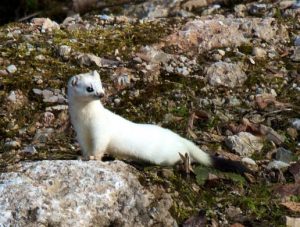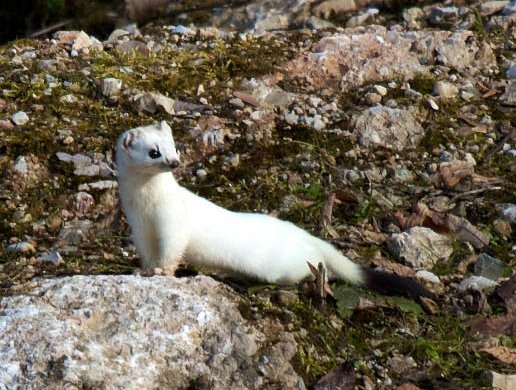BY HANNES THUM

A couple of weeks ago, a robotic lander named InSight touched down on the surface of Mars. It had been flying for more than six months and roughly 300 million miles to get from Earth to Mars. This well-traveled robot is primarily on a geologic expedition: the plan is for it to deploy seismometers and even to drill a hole deep into Mars to see if we can learn a thing or two about how planets form.
InSight also has cameras on it. And, in one of those examples of things that absolutely boggle my mind, it is able to send photos of the Martian surface back to us as easily as I text pictures of a plate of food to a friend. I still haven’t gotten my mind around the fact that I can pull up a photo of Mars that was just snapped today by this robot. When I was a kid, the closest thing I could have imagined to this was Marvin the Martian in the Saturday morning Looney Tunes.
The places our scientific curiosity takes us.
Back here on Earth, I recently came across some ermine tracks way out Quigley Canyon. Ermine tracks are distinctive in the snow. Their front feet land together, making two round, roughly quarter-sized footprints right next to each other. As they lope forward, a process that looks a little bit like a bound and makes them look a little bit like a caterpillar and a little like a horse, the rear feet will use the same footprints as the front. So, what you get is a track with two close footprint marks and then a space maybe 12 to 24 inches apart in the direction of travel where the ermine lept to the next footprints. Often, the animal leaves a linear mark through the snow between the footprints where it, I suppose, dragged its body a little bit.
Ermine tracks tell a tale of a creature who is moving across the landscape with a frenetic, “What’s over there?” and “What’s up here?” kind of energy. They are an acutely attuned predator, and their tracks will often suddenly stop and disappear where the ermine dove beneath the snow to tunnel after a hapless rodent who was otherwise just minding its own business below. I rarely see ermines, but I often see their tracks and love to try to sleuth out what they were up to or what they were chasing.
It is amazing to think that our species has figured out how to launch a robot out into our solar system in order to take measurements and photographs of another planet, a speck in our sky that would have seemed infinitely far away for most of human existence.
We humans are curious creatures, though. It’s in our nature to follow tracks, whether it is the track of a shining celestial dot far up in the sky or the track of a tiny white weasel hunting in the snow.
Hannes Thum is a Wood River Valley native and has spent most of his life exploring what our local ecosystems have to offer. He currently teaches science at Sun Valley Community School.

